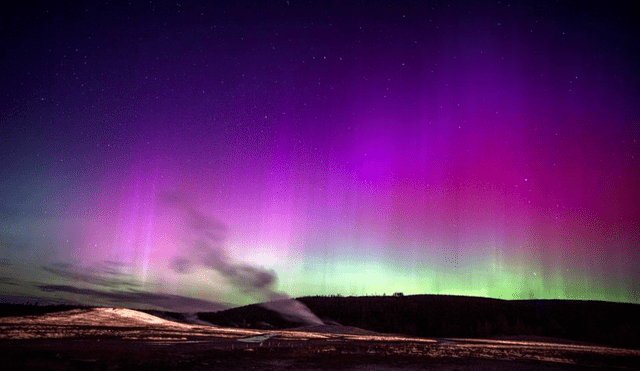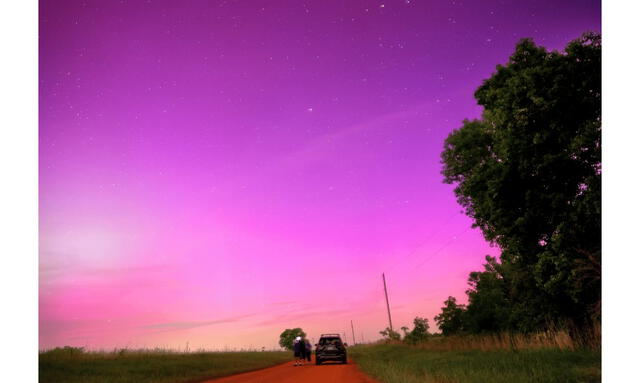Brilliant northern lights expected across northern U.S. this weekend
The northern lights may be visible across multiple U.S. states this weekend. Find out where and when to see the stunning aurora borealis and how to get the best view.

The northern lights, also known as the aurora borealis, are expected to illuminate the night sky this weekend across several northern U.S. states.
According to the National Oceanic and Atmospheric Administration (NOAA), strong solar activity is making this dazzling natural phenomenon more visible than usual.
Where will the northern lights be visible?
NOAA's forecast indicates that the aurora borealis may be visible in multiple U.S. states, particularly in areas with minimal light pollution. The best chances for viewing will be in:
- Northern states: Alaska, Washington, Idaho, Montana, North Dakota, South Dakota, Minnesota, Wisconsin, and Michigan
- Possible viewing areas: Oregon, Wyoming, Nebraska, Iowa, northern Illinois, Indiana, Ohio, Pennsylvania, New York, and parts of New England
For the best experience, experts recommend heading away from city lights to areas with clear, dark skies.

The colors of the aurora depend on altitude and atmospheric composition. Photo: USA Today
Best time to see the northern lights
While auroras can appear at various times, the most spectacular displays typically occur within an hour or two of midnight. However, the exact timing is unpredictable and depends on atmospheric conditions.
Skywatchers should check NOAA’s Aurora Dashboard for real-time updates and be prepared to head outdoors as soon as activity begins.
What causes the aurora borealis?
The northern lights occur when charged particles from the sun collide with Earth's atmosphere, exciting gases like oxygen and nitrogen. These interactions produce vibrant green, red, blue, and pink hues that dance across the sky.
The colors of the aurora depend on altitude and atmospheric composition:
- Green is the most common and occurs at lower altitudes.
- Red appears at higher altitudes due to oxygen interactions.
- Blue and purple result from nitrogen particles reacting with solar wind.
Why are the northern lights visible now?
Increased auroral activity is linked to the sun's 11-year magnetic cycle, which is currently at its peak. A recent coronal mass ejection (CME)—a massive burst of solar plasma and magnetic field—was recorded on Friday and is now reaching Earth. This solar storm, traveling at nearly 750,000 mph, is intensifying aurora displays.
How to capture stunning photos of the northern lights
For those hoping to photograph this celestial event, here are a few tips:
- Use a tripod to avoid camera shake.
- Set a long exposure (5-15 seconds) to capture light movement.
- Adjust ISO settings to 800-3200 for better light sensitivity.
- Focus manually to ensure sharpness.













